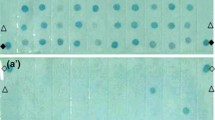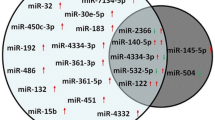Abstract
Heparan sulfate (HS), which consists of repeating disaccharide units, plays an essential role in inflammation and viral infections. Heparanase (encoded by the HPSE gene) can cleave the HS chains of heparan sulfate proteoglycans (HSPGs), which are known to be important participants in immune responses. HPSE2 (heparanase 2) is a homologous gene of HPSE. To investigate the functions of HS, which is the primary receptor of the porcine reproductive and respiratory syndrome virus (PRRSV), the two genes involved in the metabolic process of HS were studied. Here, we present a study of tissue expression profiles, polymorphisms of the HPSE and HPSE2 genes, and the changes of their mRNA levels in porcine alveolar macrophages (PAMs) induced by PRRSV. Both genes are preferentially expressed in porcine immune or immune-related organs under normal conditions, e.g., in the lung, spleen, and lymph node. Moreover, a synonymous mutation c.750A>G located in exon5 of the HPSE gene was detected, and was significantly associated with the white blood cell (WBC) count, red blood cell (RBC) count, hemoglobin (HGB), and hematocrit (HCT) in the peripheral blood (p < 0.05). A single nucleotide polymorphism (SNP) c.2073A>G was found in the HPSE2 gene and association analysis showed that it was significantly associated with the WBC content in the blood (p < 0.05). Upon stimulation in healthy piglets with PRRSV, the HPSE mRNA was obviously up-regulated, while the HPSE2 mRNA did not induce a prominent change in PAMs.





Similar content being viewed by others
References
Abboud-Jarrous G, Atzmon R, Peretz T, Palermo C, Gadea BB, Joyce JA, Vlodavsky I (2008) Cathepsin L is responsible for processing and activation of proheparanase through multiple cleavages of a linker segment. J Biol Chem 283:18167–18176
Berk RS, Dong Z, Alousi S, Kosir MA, Wang Y, Vlodavsky I (2004) Murine ocular heparanase expression before and during infection with Pseudomonas aeruginosa. Invest Ophthalmol Vis Sci 45:1182–1187
Bishop JR, Schuksz M, Esko JD (2007) Heparan sulphate proteoglycans fine-tune mammalian physiology. Nature 446:1030–1037
Cladera J, Martin I, O’Shea P (2001) The fusion domain of HIV gp41 interacts specifically with heparan sulfate on the T-lymphocyte cell surface. EMBO J 20:19–26
Clarke RW, Coull B, Reinisch U, Catalano P, Killingsworth CR, Koutrakis P, Kavouras I, Murthy GG, Lawrence J, Lovett E, Wolfson JM, Verrier RL, Godleski JJ (2000) Inhaled concentrated ambient particles are associated with hematologic and bronchoalveolar lavage changes in canines. Environ Health Perspect 108:1179–1187
Delputte PL, Vanderheijden N, Nauwynck HJ, Pensaert MB (2002) Involvement of the matrix protein in attachment of porcine reproductive and respiratory syndrome virus to a heparinlike receptor on porcine alveolar macrophages. J Virol 76:4312–4320
Delputte PL, Costers S, Nauwynck HJ (2005) Analysis of porcine reproductive and respiratory syndrome virus attachment and internalization: distinctive roles for heparan sulphate and sialoadhesin. J Gen Virol 86:1441–1445
Esko JD, Selleck SB (2002) Order out of chaos: assembly of ligand binding sites in heparan sulfate. Annu Rev Biochem 71:435–471
Fux L, Feibish N, Cohen-Kaplan V, Gingis-Velitski S, Feld S, Geffen C, Vlodavsky I, Ilan N (2009) Structure–function approach identifies a COOH-terminal domain that mediates heparanase signaling. Cancer Res 69:1758–1767
Kirkpatrick CA, Selleck SB (2007) Heparan sulfate proteoglycans at a glance. J Cell Sci 120:1829–1832
Leng SX, Xue QL, Tian J, Walston JD, Fried LP (2007) Inflammation and frailty in older women. J Am Geriatr Soc 55:864–871
Levy-Adam F, Feld S, Cohen-Kaplan V, Shteingauz A, Gross M, Arvatz G, Naroditsky I, Ilan N, Doweck I, Vlodavsky I (2010) Heparanase 2 interacts with heparan sulfate with high affinity and inhibits heparanase activity. J Biol Chem 285:28010–28019
Li L, Lu K, Chen Z, Mu T, Hu Z, Li X (2008) Dominance, overdominance and epistasis condition the heterosis in two heterotic rice hybrids. Genetics 180:1725–1742
Liu J, Thorp SC (2002) Cell surface heparan sulfate and its roles in assisting viral infections. Med Res Rev 22:1–25
Livak KJ, Schmittgen TD (2001) Analysis of relative gene expression data using real-time quantitative PCR and the 2(-Delta Delta C(T)) method. Methods 25:402–408
Mckenzie E, Tyson K, Stamps A, Smith P, Turner P, Barry R, Hircock M, Patel S, Barry E, Stubberfield C, Terrett J, Page M (2000) Cloning and expression profiling of Hpa2, a novel mammalian heparanase family member. Biochem Biophys Res Commun 276:1170–1177
Mengeling WL, Lager KM, Vorwald AC (1995) Diagnosis of porcine reproductive and respiratory syndrome. J Vet Diagn Invest 7:3–16
Miles JR, Vallet JL, Freking BA, Nonneman DJ (2009) Molecular cloning and characterisation of heparanase mRNA in the porcine placenta throughout gestation. Reprod Fertil Dev 21:757–772
Murtaugh MP, Xiao Z, Zuckermann F (2002) Immunological responses of swine to porcine reproductive and respiratory syndrome virus infection. Viral Immunol 15:533–547
Nakajima M, Irimura T, Di Ferrante N, Nicolson GL (1984) Metastatic melanoma cell heparanase. Characterization of heparan sulfate degradation fragments produced by B16 melanoma endoglucuronidase. J Biol Chem 259:2283–2290
Okada Y, Yamada S, Toyoshima M, Dong J, Nakajima M, Sugahara K (2002) Structural recognition by recombinant human heparanase that plays critical roles in tumor metastasis. Hierarchical sulfate groups with different effects and the essential target disulfated trisaccharide sequence. J Biol Chem 277:42488–42495
Parish CR (2006) The role of heparan sulphate in inflammation. Nat Rev Immunol 6:633–643
Rempel LA, Freking BA, Miles JR, Nonneman DJ, Rohrer GA, Schneider JF, Vallet JL (2011) Association of porcine heparanase and hyaluronidase 1 and 2 with reproductive and production traits in a Landrace–Duroc–Yorkshire population. Front Genet 2:20
Vanderheijden N, Delputte PL, Favoreel HW, Damme JV, Woensel PAV, Nauwynck HJ (2003) Involvement of sialoadhesin in entry of porcine reproductive and respiratory syndrome virus into porcine alveolar macrophages. J Virol 77:8207–8215
Wang F, Qiu H, Zhang Q, Peng Z, Liu B (2012) Association of two porcine reproductive and respiratory syndrome virus (PRRSV) receptor genes, CD163 and SN with immune traits. Mol Biol Rep 39:3971–3976
Waterman M, Ben-Izhak O, Eliakim R, Groisman G, Vlodavsky I, Ilan N (2007) Heparanase upregulation by colonic epithelium in inflammatory bowel disease. Mod Pathol 20:8–14
Zcharia E, Jia J, Zhang X, Baraz L, Lindahl U, Peretz T, Vlodavsky I, Li JP (2009) Newly generated heparanase knock-out mice unravel co-regulation of heparanase and matrix metalloproteinases. PLoS One 4:e5181
Zhang Y, Ryan DS, Bower KS, Ilan N, Vlodavsky I, Laurie GW (2010) Focus on molecules: heparanase. Exp Eye Res 91:476–477
Zhou P, Zhai S, Zhou X, Lin P, Jiang T, Hu X, Jiang Y, Wu B, Zhang Q, Xu X, Li JP, Liu B (2011) Molecular characterization of transcriptome-wide interactions between highly pathogenic porcine reproductive and respiratory syndrome virus and porcine alveolar macrophages in vivo. Int J Biol Sci 7:947–959
Acknowledgments
This work was supported by the Major Program of the Natural Science Foundation of Hubei (2010CDA048), the Doctoral Fund of Ministry of Education of China (20100146110021), and the Fundamental Research Funds for the Central Universities (2011PY053).
Author information
Authors and Affiliations
Corresponding author
Rights and permissions
About this article
Cite this article
Tao, C., Wang, W., Zhou, P. et al. Molecular characterization, expression profiles, and association analysis with hematologic parameters of the porcine HPSE and HPSE2 genes. J Appl Genetics 54, 71–78 (2013). https://doi.org/10.1007/s13353-012-0119-8
Received:
Revised:
Accepted:
Published:
Issue Date:
DOI: https://doi.org/10.1007/s13353-012-0119-8




